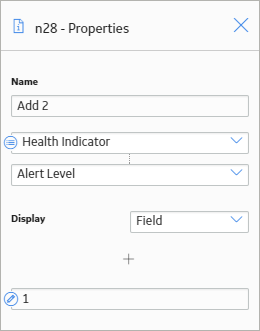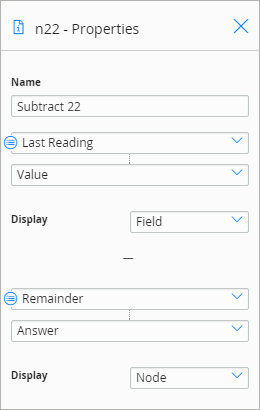The Properties window for each node contains the items that are described in the following table.
|
Item |
Description |
Notes |
|---|---|---|
|
First value |
You can select |
|
|
Calculation symbol |
The symbol that corresponds with the mathematical calculation that is performed by the node. |
None |
|
Second value |
The second input value that will be used in the calculation. |
You can select |
|
Display list |
Determines the label that appears on the node in the policy model. |
This list does not appear if you enter a constant in the corresponding section. |





